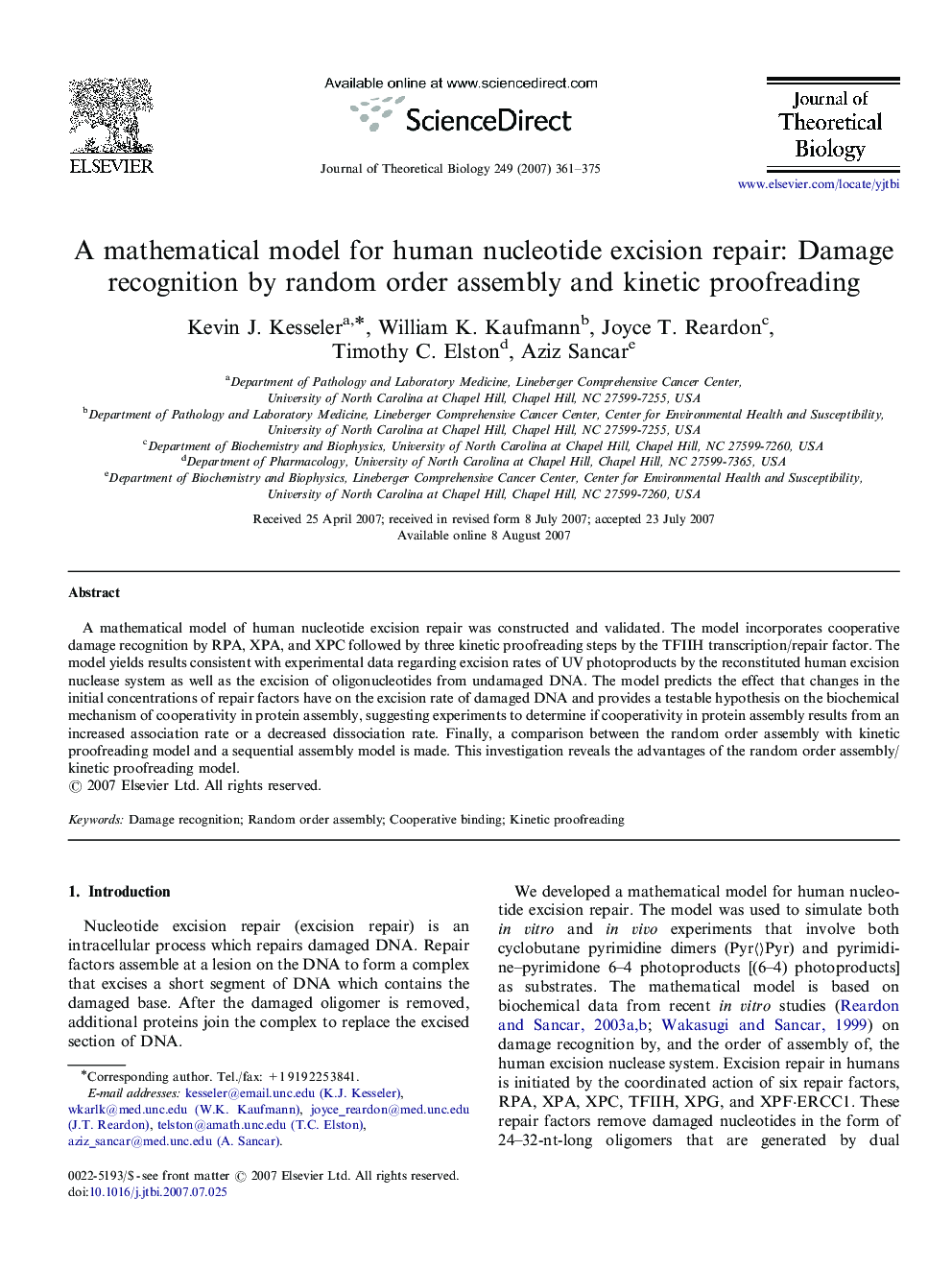| Article ID | Journal | Published Year | Pages | File Type |
|---|---|---|---|---|
| 4498796 | Journal of Theoretical Biology | 2007 | 15 Pages |
A mathematical model of human nucleotide excision repair was constructed and validated. The model incorporates cooperative damage recognition by RPA, XPA, and XPC followed by three kinetic proofreading steps by the TFIIH transcription/repair factor. The model yields results consistent with experimental data regarding excision rates of UV photoproducts by the reconstituted human excision nuclease system as well as the excision of oligonucleotides from undamaged DNA. The model predicts the effect that changes in the initial concentrations of repair factors have on the excision rate of damaged DNA and provides a testable hypothesis on the biochemical mechanism of cooperativity in protein assembly, suggesting experiments to determine if cooperativity in protein assembly results from an increased association rate or a decreased dissociation rate. Finally, a comparison between the random order assembly with kinetic proofreading model and a sequential assembly model is made. This investigation reveals the advantages of the random order assembly/kinetic proofreading model.
